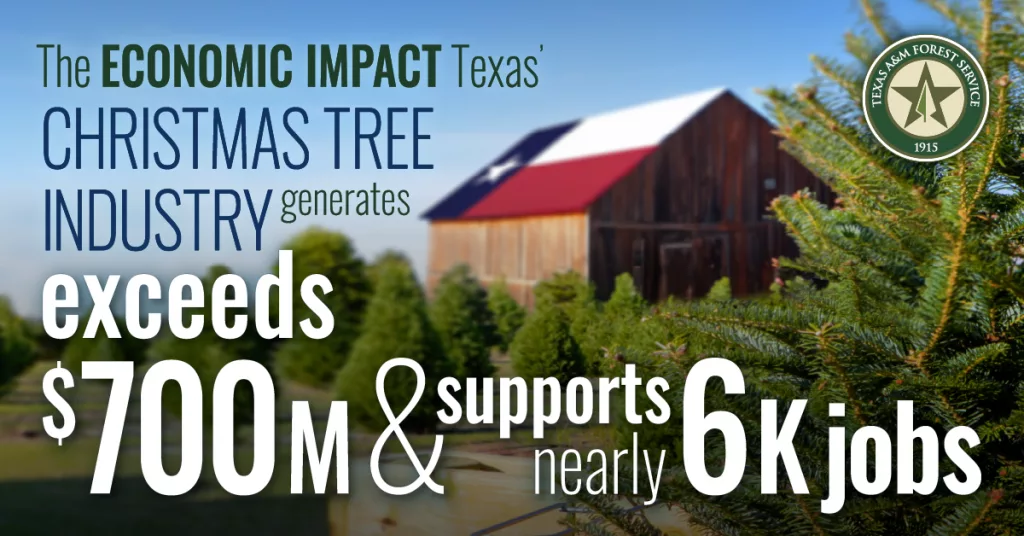

The Texas Christmas tree industry is making significant contributions to the state's economy and agritourism sector. According to a report by the Texas A&M Forest Service, the industry generates an impressive economic impact of over $714 million, supporting nearly 6,000 jobs with a direct economic impact of $397 million [40a8ffbc]. More than four million real Christmas trees are sold annually in Texas, highlighting the industry's importance in the region.
The economic benefits of the Christmas tree industry extend beyond direct sales. Agritourism related to Christmas tree farms has seen remarkable growth, with revenues tripling from 2002 to 2017. These farms not only provide trees but also enhance visitor engagement, offering a unique experience for families and tourists alike [40a8ffbc]. Popular species grown in Texas include Virginia pine, Afghan pine, eastern red cedar, shortleaf pine, Arizona cypress, and Leyland cypress, with the first Christmas tree plantation established in Jasper, Texas, in 1935.
The Texas Christmas Tree Growers Association has reported that 130,000 seedlings have been purchased for planting in spring 2025, indicating a commitment to sustaining and expanding the industry [40a8ffbc]. Beyond economic contributions, real Christmas trees play a vital role in environmental sustainability. They provide carbon sequestration and serve as wildlife habitats, making them beneficial for both the economy and the environment.
The broader U.S. Christmas tree industry, while facing challenges such as changing consumer preferences, continues to adapt and thrive. In 2022, the combined sales of natural and artificial trees in the U.S. amounted to roughly $3 billion annually. The National Christmas Tree Association has noted a current boom period, with tight supply before the pandemic and a surge in demand for trees that customers can pick and cut themselves [7072853b]. Despite the decline in real Christmas tree sales nationwide, the resilience of Texas farmers, like those at Wyckoff’s Christmas Tree Farm, showcases the adaptability of the industry in a changing landscape.
As the world continues to prioritize sustainability and address climate change, supporting the Texas Christmas tree industry becomes increasingly crucial. The economic and environmental impact of this industry highlights the interconnectedness of agriculture, tourism, and ecological health, reinforcing the importance of sustainable practices in tree cultivation and conservation.